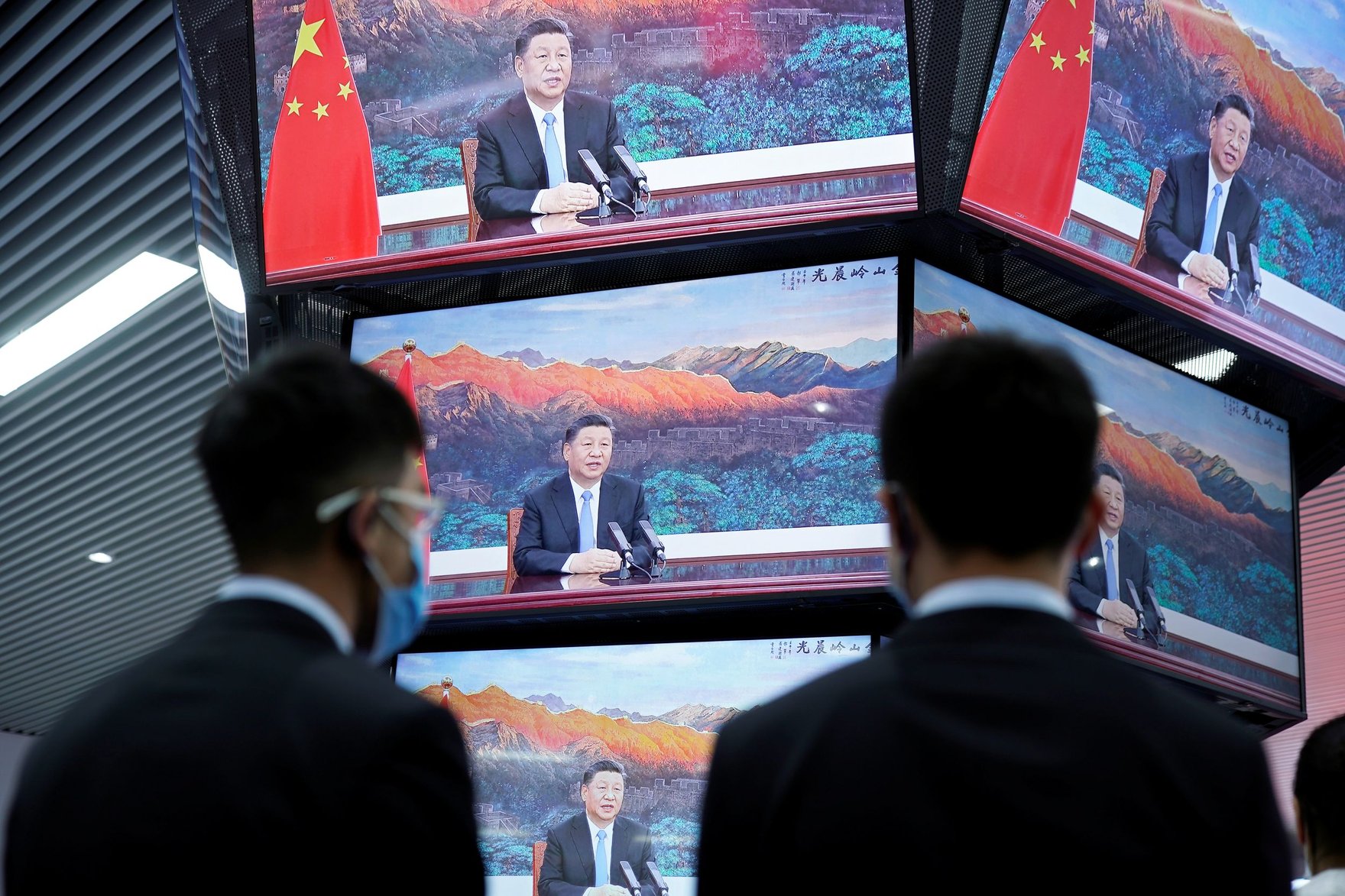Artificial intelligence (AI) is one of the key opportunities and challenges of our time. Every year, hundreds of billions of US dollars are invested in and on matters related to AI. The technology promises to revolutionize most industries, but also security and military affairs. Given the potential safety risks (ranging from biases to the unethical use of AI, to algorithms going rogue), ensuring effective governance of AI and its rapid development is becoming a critical concern. Governments, think tanks, private sector actors and various other invested stakeholders are all striving to develop laws and guidelines for safe and ethical AI use. At the international level, state and non-state actors alike are working on global AI governance, from studying the challenges posed by AI, to gathering to discuss ways forward at AI Safety Summits.
Seeing science and technology (S&T) efforts in key fields as essential to ensuring its continued prosperity, the People’s Republic of China (PRC) has invested heavily in AI and has developed incentives to attract top talent. Already the frontrunner in 57 of 64 emerging and disruptive technologies, it aims to become the world leader in AI by 2030. China has also sought to militarize AI (as a tool, an enabler or a methodology across technologies spanning defence, such as space, biotechnology, robotics, quantum, computing and advanced materials, as well as in the nuclear and cyber domains) to make the People’s Liberation Army a world-class fighting force.
Nationally, Beijing has been very active in developing domestic governance of AI, being the first country to implement binding regulations on select applications, such as algorithm guidelines and content generation. It has also sought to participate in global AI governance efforts, although its role until now has been limited.
In 2023, President Xi Jinping launched the Global AI Governance Initiative (GAIGI), laying out Beijing’s proclaimed principles and objectives to ensure safe AI for all. This policy should, however, be seen in the context of China’s broader foreign policy objectives and its rhetoric on international affairs, which demonstrates that its commitments to AI governance are more than simply a search for a governance framework; they serve China’s broader global ambitions.
Contextualizing the GAIGI
The GAIGI is Beijing’s enunciation of its proclaimed objectives for international AI governance, aiming to “promote AI technologies to benefit humanity and contribute to building a community with a shared future for mankind.” It advocates for a “people-centered approach” to AI governance, stresses the importance of respecting state sovereignty and calls for “mutual respect, equality, and mutual benefit.” Furthermore, it argues in favour of broad consultation in the development of governance frameworks, championing the involvement of the Global South. For example, in 2024, China and Zambia co-hosted the Group of Friends for International Cooperation on AI Capacity-building, an informal venue organized on the sidelines of the United Nations. That same year, China proposed a resolution at the UN General Assembly, calling for AI capability building as well as the involvement of Global South countries in governance efforts. China has also been working within international organizations responsible for setting technical standards, which could give it opportunities to shape AI-related standards to serve its own preferences. Moreover, Shanghai now hosts the annual World AI Conference on global governance.
In many cases, Chinese foreign policy has been rebranded to simply reinforce desired policy outcomes. Nevertheless, the associated rhetoric and targeted end states reinforce China’s growing international leadership efforts.
The GAIGI should, then, first and foremost, be situated within the context of China’s rhetoric, diplomacy and soft-power ambitions. Since his ascension to power in 2012, Xi Jinping has been promoting the idea of a “community for a shared future for mankind,” which is China’s proclaimed vision for a reformed international order. It lays out numerous ideas on how to improve the world on a broad range of issues, from economic development and climate change to security cooperation. It preaches, among other things, the importance of mutually beneficial cooperation and the respect of state sovereignty, themes fully incorporated into the GAIGI. Conceptually linked to this narrative, and further supporting China’s rise, are a shortlist of other global initiatives often linked to AI.
Launched from 2021 to 2023, the Global Development Initiative (GDI), the Global Security Initiative (GSI) and the Global Civilization Initiative (GCI) each embodies central parts of China’s stated futures’ vision. While rich in ideas, and rife with platitudes, none offers clear measurables nor tangible next steps. In many cases, Chinese foreign policy has been rebranded to simply reinforce desired policy outcomes. Nevertheless, the associated rhetoric and targeted end states reinforce China’s growing international leadership efforts. For example, the emotive language of these mutually reinforcing global undertakings increasingly permeates international fora, China-organized regional events and multinational conferences. To further leverage buy-in from other states, the PRC’s practice of establishing “strategic partnerships” is also now increasingly associated with the laudatory aim of building a “shared future.” In other words, AI is frequently associated with a means of moving like-minded countries forward toward a common end.
Why Is China Doing This?
Leading global AI governance benefits China in numerous ways.
First, it provides an opportunity for Beijing to shape the norms, values and rules that will govern AI in the future. This is consistent with China’s often-voiced grievance that it has previously been excluded from this role by Western nations in the immediate postwar institution-building era.
Second, while the Chinese Communist Party (CCP) is concerned about AI safety, its perspective is determined by the primacy of maintaining its authoritarian, one-party system and its use of AI for state control. In being a rulemaker and influencer, Beijing strives to build international consensus on regulation development in areas sensitive for the regime, such as in ensuring that generative AI respects CCP political direction. In a similar fashion, contrary to Western assertions that AI should not infringe on individuals’ rights, China is actively normalizing the use of advanced algorithms in surveillance operations.
Third, China actively seeks to promote its image as a benevolent power and a positive force in world affairs. The aspirations of the GAIGI (and the promotion of AI in the GDI, the GSI and the GCI) collectively provide China with a “veneer of good intentions” to clothe its often-self-interested aims. As President Xi has stressed, cultivating a perception of a “credible, loveable and respectable China” is central to its global ambitions of pre-eminence in world affairs. For decades, the PRC’s narrative of “peaceful development” has been used to try to reassure the world about the possible negative implications of China’s rise. International leadership, stressing shared advancement through AI and purported commitments to achieving “win-win cooperation” (particularly with states in the Global South), is proving a positive message capable of fostering broad and diverse support among disadvantaged less-developed countries.
A fourth and final motivation for China’s leadership efforts in AI governance is the affirmation status it secures as a global power, bolstering its pre-eminence in cutting edge S&T domains, as well as demonstrating its capability to offer an alternative to Western, hegemonic and liberal internationalist models of norm setting and standardization. Xi aspires to secure leadership roles in international affairs for both himself and China more generally. In so doing, Beijing strives to fill the role of what Trump critics refer to as America’s increasing “international absenteeism.” AI governance provides China with an ideal soft-power test case to trial and learn from, as it is generally non-controversial, a challenge area faced by all nations, and one where new models and approaches are possible as precedence is lacking.
Beyond Technology
The case of China’s global AI governance efforts reminds us that rarely are technical considerations and purported good intentions the only factors that drive efforts to bring change and innovation to regulatory processes and governance, especially in novel S&T domains. This is not to say that Chinese leaders do not have concerns over AI’s use and safety. Quite the opposite: the CCP released a policy document on AI safety in 2024. Xi stressed the unprecedented risks and challenges posed by AI during a 2025 Politburo study session. The potential dangers of emergent technologies were also noted as a security concern in China’s first national security white paper, and Beijing has recognized the complexity of the military applications of AI.
However, all that said, China has its own vision for what is acceptable and unacceptable for algorithms, which at times may contradict Western values, norms and standards. Moreover, Beijing’s motivation in leading the world on AI governance is not apolitical in nature; rather, it offers an opportunity to demonstrate global leadership, exercise soft power and mobilize the Global South in common cause, as well as demonstrate an alternative approach to existing rules-based international order institutionalist practices.
This leaves the West in a challenging position where it must both engage China and embrace its leadership on this front, while at the same time prevent Beijing from distorting norms that do not work in the best interests of the common good. Excluding China from multilateral platforms promoting AI safety, best practices and standard setting is not practical, risks overlooking major gaps in effective governance, and presupposes that Western interests hold all the right answers, which is clearly not the case.
Moreover, China’s massive AI sector, multi-year state commitment to advancing this technology, and growing economic dominance in many areas of this research domain make it a critical player. This will continue to be true for years to come. What is required, then, is a dispassionate approach that recognizes Chinese contributions, while it also openly critiques normative biases (particularly those that undermine individual rights and liberties) and avoids the tendency for any one country to advantage itself at the expense of others, and one that strives for consensus through the application of critical thinking, the implementation of a strong challenge function, and the full realization that all states have a profound stake in getting this as close to right as humanly possible.




